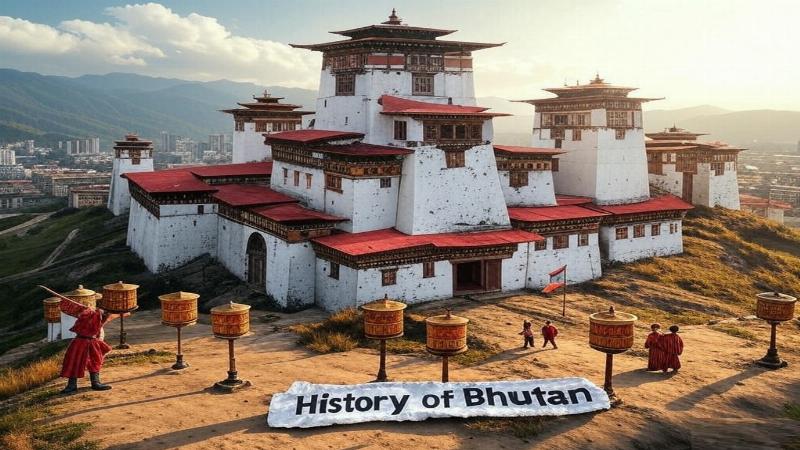Place for ads

Bhutan, a small Himalayan kingdom nestled between India and China, is a land where tradition dances with serenity. Covering 38,394 square kilometers, its rugged mountains and lush valleys have cradled a unique history, shielded by nature’s embrace. Known today as the “Land of the Thunder Dragon” and for its pursuit of Gross National Happiness, Bhutan’s past is a blend of ancient tribes, Buddhist enlightenment, and a deliberate path to modernity. In this article, we’ll journey through Bhutan’s history, from its shadowy origins to its vibrant present, uncovering the forces that have shaped this mystical nation.
Bhutan’s human story begins in the Stone Age, around 2000 BCE, with evidence of hunter-gatherers in its high valleys. Archaeological finds—like stone tools in Bumthang—suggest these early peoples roamed the rugged terrain, hunting deer and gathering wild plants. The isolation of the Himalayas kept them distinct, with little outside contact.
By 500 BCE, tribal groups—likely of Tibeto-Burman stock—settled the region, farming rice and millet in fertile pockets like Paro and Punakha. Oral traditions hint at animist beliefs, with spirits of mountains and rivers revered long before Buddhism arrived. These early Bhutanese laid the cultural bedrock of a nation still tied to
Place for ads
Bhutan’s recorded history emerges around the 7th century CE, tied to Buddhism’s spread. Legend holds that Guru Rinpoche (Padmasambhava), a tantric master from India, flew to Paro Valley on a tigress in 747 CE, subduing demons at Taktshang (Tiger’s Nest) Monastery. His visit marked Bhutan as a Buddhist stronghold.
Small chieftaincies ruled—Lhomon or Monyul (“Dark Land”) was an early name—trading salt and yak products with Tibet. The
Place for ads